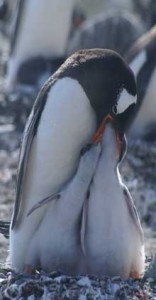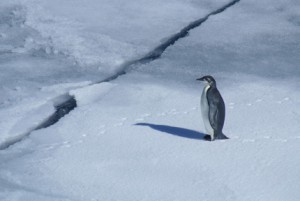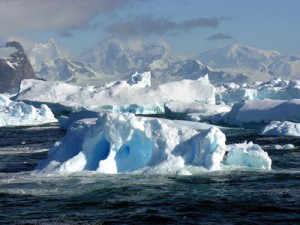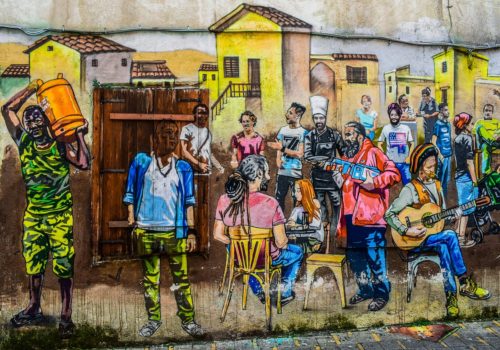Download PDF: Selby, Imagining Antarctica
ABSTRACT
A ten-day expedition to Antarctica provides the context for exploring imagination as a creative and iterative process that transforms our perceptions of things seen and unseen. Supplemented by photographs, the essay describes how encounters with sacred story and liturgy over the course of the journey spark and capture the imagination.
Sparking the Imagination
When I told friends that I was going to Antarctica, I got one of two responses: either “Wow!” or “Why?” At first I thought that the bearers of those two sentiments differed in their sense of adventure, or maybe over the simple matter of not liking the cold. But it was more than that. Conversation after the initial gut reaction revealed that the basic difference between the “wow’s” and the “why’s” was that the first group desired to live into possibility, while the second group preferred the stable comfort of certainty.
As a process theologian, I am drawn to “possibility” as the way in which God works in the world. God sparks our imagination by placing before us possibilities for beauty, wholeness, and love, and inspires us to co-create a world in which those possibilities come into being. This vision informs my ministry as a community-based chaplain and seminary instructor, and it leads me to approach life with a sense of adventure. My colleague and friend, Lisa, had longed to go to Antarctica and was in search of a companion for the trip. When she asked me in October 2005 if I would go, I was impulsive enough to say “yes,” after sleeping on it for only one night. The possibility of going to Antarctica was something I just couldn’t pass up. It seemed that God was luring me to explore this wild and mysterious continent. The next spring, we booked our passage on a Lindblad-National Geographic expedition that would leave just after Christmas.
Imagination is a creative and iterative process that transforms our perception of things seen and unseen by placing before us possibilities that spark our creativity. This transformation can occur by constructing—and over time, reconstructing—images of that which is invisible, and yet perceived, or by transforming visible images by imbuing them with new meaning. God is at work in the imaginative process, moving us to seek deeper levels of meaning that reframe existing images, and inspiring us to create new images of beauty and wholeness. As I prepared for my trip to Antarctica, my imagination of what I would encounter there was aided by images in photographs, websites, and books. In my imagination, I began to construct my own images of standing on the deck of the ship admiring the scenery or walking among the penguins on the shore. An evening spent with friends who had previously taken this trip added adjectives and anecdotes, though I could see that they struggled to find words to capture their experience. “It’s a very spiritual place,” they said, “you’ll see.”
Friday, December 29, 2006 found Lisa and I boarding the National Geographic Endeavour in the southernmost city in the world, Ushuaia, a coastal city surrounded by treeless snow-capped mountains, an area so barren and remote that Argentina established a penal colony there in the late 19th century. Standing on the deck as we pulled away from the dock into the Beagle Channel, we found ourselves trying to place this strange land in the realm of the familiar by connecting its landscape to something we had seen before. Lisa and I decided that it reminded us of the Highlands of Scotland, whose wild beauty and ever-changing weather makes one sense both the power and the intimacy of nature. Ushuaia had that same character of windswept mountains, tinged with the purple and green of heather and lichen, of mist mingling with clouds punctured with beams of sunlight.
The sudden familiarity of this strange place triggered a memory of what the Celtic tradition calls a “thin place,” where the boundary between this world and the eternal is lifted in order to bring one into the near presence of God. Farther from home than we had ever been, we felt at home in this thin place amidst the mountains of Patagonia. When we shared that impression with a British couple who, like us, were marveling at the scenery, the woman looked startled and said, “I was just saying the same thing.” Naming that shared experience of the holy—I had observed that “it is a spiritual place where the veil is very thin”—brought us into greater awareness of God’s presence, awakening us to the possibilities before us. As we began the voyage to Antarctica, our surroundings alerted us to God’s creative process at work in the paradox of novelty and familiarity, as the tension between those realities revealed the invisible within the visible. We knew now what our friends back in Ohio meant by describing this as a spiritual place. In sensing the familiar in the strange on the deck of the Endeavour, the imaginative process, in which images are transformed by perceived patterns of meaning, arose in the creative tension of that paradox, where spiritual journeys often find their roots.
Capturing the Imagination
Crossing Over
Early on the morning of December 30, we passed Cape Horn and entered the Drake Passage, named for the Englishman who sailed around the world in 1577-1580. This passage of water, where the Atlantic and Pacific Oceans come together, is notorious for its wild turbulence and severe storms. What must Drake have thought when, the day after clearing the Strait of Magellan to enter the Southern Ocean, he encountered severe storms that drove him far south toward lands unknown?

The powerful confluence of oceans and currents can make crossing the Drake feel like being in a washing machine. We spent a restless night as the Endeavour cut through turbulent seas whose waves, we were later told, were “only ten to fifteen feet” high. Our own navigation of the ship’s interior hallways and common rooms by means of clinging to ropes reinforced the strangeness and wildness of our adventure. Not until the next afternoon were the seas calm enough for us to go out on deck and see the ocean stretching serenely out to the far horizon in all directions. A bird flew toward us over the waves. As it approached, I placed it into the mental category of “seagull” until, when it swooped directly overhead, I realized I was seeing an albatross, whose fourteen-foot wingspan makes it the largest bird on the planet. This bird was not our only winged companion: an array of huge seabirds, including albatross, giant petrels, and pintado petrels guided us across the Drake.
The First Sunday after Christmas Day dawned at 3:13 a.m., a sunny day with calm seas. Later that morning Lisa and I led a worship service attended by a dozen passengers on the pool deck. Together we read the Benedicite, omnia opera Domini:
Glorify the Lord, O springs of water, seas and streams,
O whales and all that move in the waters.
O birds of the air, glorify the Lord,
Praise him and highly exalt him for ever.1
In our majestic outdoor cathedral, Lisa read from the gospel appointed for the day: “In the beginning was the Word, and the Word was with God, and the Word was God” (Jn 1:1, NRSV). With these words, John the Evangelist places the Christmas story within the cosmic context of creation. In the word made flesh, God’s creative and redemptive power is revealed in a pattern of self-giving love that rules and governs all of existence, a pattern that is built into the very structure of creation. “All things came into being through him, and without him not one thing came into being. What has come into being in him was life, and the life was the light of all people” (Jn 1:3-4). There-on the back deck in bright sunlight, with albatross and petrels soaring over waters teeming with life-we could think of no more appropriate words with which to celebrate the First Sunday after Christmas Day.

That liturgy shaped our experience for the week, “capturing” our imagination and rooting it in sacred stories. The next week was to be a voyage of discovery in which our imaginations responded to the possibilities for beauty, wholeness, and love that were being revealed all around us. Paradoxically, the experience of being captured by our sacred stories freed us to experience our journey, unbounded by our usual constraints of time and space. For the liturgy was an act of remembering God’s gracious activity in creation and incarnation, calling us to perceive deeper levels of meaning in our experience by anchoring it in the connectedness of all creation through the Creator. We were participating in a deep mystery, experiencing the teeming abundance of creation in a setting so vast as to be beyond comprehension. Yet in the days ahead, the undercurrent of sacred story made the newness of what we were seeing seem somehow familiar, and the God whose transcendent grandeur was so evident in the astounding beauty of Antarctica intimately and immanently present. If imagination is a process of creation, the liturgy reminded us that we are co-creators with God. As we approached the shores of Antarctica, we did so feeling free to grasp the holy in all that awaited us.
That afternoon, we made our first landfall, taking our Zodiacs to Aitcho Island in the South Shetlands and encountering our first penguins. How wonderful it was to see these creatures, previously known to us only in movies or still photographs, come alive with motion, sounds, and smells! And how delightfully playful they seemed in their constant state of activity! We watched as birds returning from harvesting krill in the ocean greeted their mates with ritual head bobbing and vocalizing before exchanging positions on the nest, where their young stood with mouths raised expectantly toward the sky. Once completing the ritual of the nest exchange, the parent began to feed the chick, who stuck its head far up the parent’s open mouth to receive the krill. Meanwhile, the other parent headed quickly down to the beach, squawking loudly as it joined the parade of penguins waddling toward the sea. It was pure joy to watch them in action.
Imagination and Projection
The next day, New Year’s Day, we had a rare treat while cruising in the Weddell Sea on the eastern side of the Antarctic Peninsula, sighting what one of our naturalists called, “the Holy Grail of penguins,” an Emperor, rarely seen by tourists. This solitary penguin, recently fledged, wandered around on a vast ice flow. We watched as it walked about and tobogganed on the ice.Many of us cried at the poignancy of this young creature starting its journey in the vast expanse of Antarctica. We could see him standing on the ice and casting a lonely shadow, then leaving tracks on the ice as he walked, making a tiny impact on the world around him.

Karen, one of the naturalists, interrupted our reverie. She, along with our expedition leader, Matt, had been sharing insights over the loudspeaker about what we were seeing. “I know you all are feeling sad for this young penguin that has headed out alone into this vast new world and finds itself lonely and afraid and misses his mother,” she said. “Please don’t project your human thoughts and feelings onto this creature. He’s doing exactly what penguins are supposed to do.”
Wise counsel! Imagination requires us to live in paradox, having the freedom to experience novelty while processing our encounter through an interpretive lens shaped by our past experience. While our perception can provide an interpretive frame that prevents our imagination from becoming a flight of fantasy, our perception can become projection if it is not grounded in a willingness to experience our surroundings with clear eyes and an open mind. I saw the penguin’s fits and starts as a metaphor for the human journey, from childhood to adulthood. Grounding his actions in the experience of my own life journey, it was a short step to project the confusion of emotions from my own process of maturation onto this solitary penguin. Karen’s announcement was an important warning. As we experienced this strange land that sparked our imagination, we had to take care to free that imagination from the limitations of our projections. We had to let penguins be penguins.
Imagination, Abundance, and Destruction
Glorify the Lord, O beasts of the wild,
and all you flocks and herds,
O men and women everywhere, glorify the Lord,
praise him and highly exalt him for ever.2

On the afternoon of New Year’s Day, we landed at Paulet Island, a volcanic island lying off the northeastern end of the Antarctic Peninsula. Paulet is home to more than 100,000 nesting pairs of Adélie penguins, which along with their chicks add up to more than 300,000 penguins on an island one mile in diameter. The sight, the sound, and yes, the smell, of this proliferation of life in a relatively small space was overwhelming. Pink and white guano covered the rock surfaces on which the penguins had built their nests of pebbles, and permeated the air with a pungent odor that seemed to emanate from our pores long after we had returned to our ship. The air was filled with the staccato squawking of penguins performing their nest exchange rituals: “ah, ah, ah, ah, ah, ah, ah, ah, AAAHHHH!” We walked carefully around the closely-packed colonies of nesting penguins, although they seemed mostly untroubled by our presence. Meanwhile, there was a steady stream of penguins diving into the water to fish for krill, while others returned from the sea, ready to regurgitate their catch into the mouths of hungry chicks. When I sat quietly on the beach, a penguin approached and stood beside me, looking curiously at this strange creature in the red parka.
The abundance that we encountered on this day, the feast day of the Holy Name of Jesus, brought to mind Jesus’ response in John’s gospel to a situation of scarcity. It was the inaugural event of his ministry, a wedding, and the hosts had run out of wine. Jesus responded by turning into wine the water reserved for ritual purification. Not just a little water, but gallon upon gallon of it. John calls the turning of water into wine not a miracle, but a “sign” that points beyond itself to something else. The wedding party was transformed from an ordinary occasion into an extraordinary moment of revelation. What is revealed is the paradoxical way in which God is present among us in both the ordinary and the extraordinary, the extravagant and the mundane. From that creative tension come transformation and new possibility. The voices of our culture teach us in ways both strident and subliminal to see the world through a lens of scarcity, telling us that we will never have enough. Jesus shows us a world that is overflowing with abundance, a graceful world in which God’s creation is a gift to be treasured and shared, not abused and hoarded.
Our naturalist, Karen, walked around Paulet with a group of us, telling us about penguin life. Of the four species of penguins that we would see on our trip, the Adélies have been most affected by global warming. Their population is shrinking at an alarming rate. Adélies need to lay their eggs on bare rock, and, ironically, rising temperatures have brought more snowfall. Karen told us that the winter temperature on the peninsula has risen by nine degrees Fahrenheit in the last twenty years. She picked up a dead penguin and gave us a lesson in penguin anatomy, showing us the strong wings that propel it through the water at speeds of over ten miles per hour, and the thick layers of feathers and fat that protect the penguin from the cold. We had seen leopard seals patrolling the waters just offshore, and skuas dive-bombing nests to get at chicks. As our imagination was stretched by the sheer abundance of life around us, we were reminded also of its fragility. Our North American surroundings reflect our relentless striving to domesticate both God and nature, but Antarctica allowed us to imagine the world as God intended it, as stark and dangerous as that might be.
Is it by your wisdom that the hawk soars,
and spreads its wings toward the south?
Is it at your command that the eagle mounts up
and makes its nest on high?
It lives on the rock and makes its home
in the fastness of the rocky crag.
From there it spies the prey;
its eyes see it from far away.
Its young ones suck up blood;
and where the slain are, there it is (Job 39:26-30).
We walked by the remains of an emergency hut built from stone by a crew from Nordenskjöld’s 1901-04 Swedish Antarctic Expedition, who were forced to winter on Paulet Island after their ship was crushed by sea ice. The grave and burial cross for Ole Wennersgaard, a seaman who died on Paulet Island, lies near the beach. A little over one hundred years later, more than 22,000 tourists come to Antarctica each year.
The environmental effect of so many visitors could potentially threaten the survival of the very creatures that so inspired our imaginative delight. Our naturalists carefully warned us about getting too close to penguin nests, and we did what we could to avoid disturbing the ecosystem. In 1990, the tour companies created an organization to insure safe, responsible, environmentally-sensitive tourism in Antarctica. Our guides hoped that we would return from Antarctica as ambassadors for its preservation. Antarctica reminds us that we live in the tension of extravagance and fragility, abundance and scarcity.

On the day after New Year’s, we took advantage of the sunny and calm weather by kayaking near Eagle Island, and then walked along the shore to photograph icebergs glistening in the sun. In the afternoon, we landed on Devil’s Island, and watched the bizarre behavior of the Adélies, who are both attracted and repulsed by the water. Wanting to dive in to fish, but fearing the predatory leopard seals lurking offshore, they run up and down the beach in large packs before standing before the water, their loud squawking crescendoing, until someone dares to take the first leap. Sometimes a few brave penguins will dive into the water, only to jump back out when one loses its nerve. Eventually, a few valiant souls head out to open water.
The next day, we arrived at Deception Island, which became a center of activity in the early 20th century because its volcanic caldera forms a large sheltered harbor. Imagination of riches brought the sealing and whaling industries to Antarctica in the 19th century. In the early 1900s, whaling companies used Port Foster on Deception Island as a mooring site for floating factory ships. Later, the British and others established bases on that island; these, along with the old whaling station, were badly damaged in sizeable volcanic eruptions in 1967 and 1969. We visited this place on an appropriately gloomy day, walking among the ruins as our guides told us how whalers had decimated the population of whales in the 19th and early 20th centuries.

After spending three days seeing the unspoiled beauty of Antarctica, Deception Island served as a shocking reminder to us of the destructive toll that human commerce and industry can take on God’s creation. To this point in our journey, we had felt God’s presence amidst the abundance and beauty of our surroundings. Reading the service of Compline every evening before retiring had framed each day’s memories within the context of God’s providential care. This particular evening, though, Psalm 4:2 reminded us that human destructiveness extends to the ends of the earth.
“You mortals, how long will you dishonor my glory?
how long will you worship dumb idols
and run after false gods?”3
Imagination, Light, and Epiphany
Glorify the Lord, O chill and cold,
drops of dew and flakes of snow.
Frost and cold, ice and sleet, glorify the Lord,
praise him and highly exalt him for ever.4

Early in our trip, Magnus, one of the naturalists, had said, “When people think of Antarctica, they think of penguins. You will learn that it is all about the ice.” Fascinated and thrilled by the penguins all around us, we couldn’t quite agree. But as the journey continued, we realized that he was right. Sea ice provides the basic conditions for the food chain to thrive, creating the perfect habitat for microscopic algae, called diatoms, which in turn attract krill, tiny pink crustaceans that are the food source for penguins, seals, and flying birds. During our trip, we saw massive tabular icebergs that had calved from the ice shelves of the Weddell Sea. Those ice shelves are falling away from the Antarctic continent at an alarming rate. The changing pattern of sea ice upsets the habitat for algae, thus decreasing the population of krill and threatening Antarctic wildlife.
We were captivated by the interplay of ice and light, as many of the icebergs seemed to be fed by a light within. Often icebergs and glaciers emanate a radiant blue light, since blue is the only color of the spectrum that is not absorbed by ice crystals. This light can glow and shine, or in lesser light, it may be more softly muted, seeming to bring the ice to life. Members of the Religious Society of Friends speak of the “Inner Light,” the presence of God within all people. Thomas Kelly, the renowned Quaker teacher, describes it this way in his classic work, A Testament of Devotion:
Deep within us all there is an amazing inner sanctuary of the soul, a holy place, a Divine Center, a speaking Voice, to which we may continuously return. Eternity is at our hearts, pressing upon our time-torn lives, warming us with intimations of an astounding destiny, calling us home unto Itself. Yielding to these persuasions, gladly committing ourselves in body and soul, utterly and completely, to the Light Within, is the beginning of true life. It is a dynamic center, a creative Life that presses to birth within us. It is a Light Within which illumines the face of God and casts new shadows and new glories upon the face of men. It is a seed stirring to life if we do not choke it. It is the Shekinah of the soul, the Presence in the midst. Here is the Slumbering Christ, stirring to be awakened, to become the soul we clothe in earthly form and action. And He is within us all.5
The radiance of the towering ice against the supreme quiet, with only the voice of the winds to break the stillness, placed before us a picture of what our inner life could be like were we to establish what Kelly calls “mental habits of inward orientation.” As he notes, “by quiet, persistent practice in the turning of all our being, day and night, in prayer and inward worship and surrender, [we move] toward Him who calls in the deeps of our souls.”6 The ice, that great cathedral of stillness and light, sparks the imagination of the holy, drawing me toward the Inner Light.
O gracious Light,
pure brightness of the everliving Father in heaven,
O Jesus Christ, holy and blessed!
Now as we come to the setting of the sun,
and our eyes behold the vesper light,
we sing your praises, O God: Father, Son, and Holy Spirit.
You are worthy at all times to be praised by happy voices,
O Son of God, O Giver of life,
and to be glorified through all the worlds.7
The western side of the Antarctic Peninsula is a spectacular landscape of glacier-covered mountains towering over waters afloat with icebergs in myriad sizes and shapes. As we admired the dramatic mountain scenery against a pristine blue sky, we were entertained by humpback whales splashing about us as they fed, while orca whales traveled alongside in the distance. After dinner, we headed south to the Lemaire Channel. While we sailed through the channel, six bow-riding orcas led us toward the radiant sunset, the vaporous spray of their “blow” glistening against the light. When the sun eventually fell below a bank of grey clouds, its rays shone through in “pure brightness” against the grey water below before finally setting, at midnight, only to rise again two hours later.

The next day, we continued on our southward journey until, finally, a glittering barricade of ice bergs forced us to turn north for the long journey home. In our Zodiacs, we toured an ice field, moving quietly through a maze of frozen blue sculpture featuring the occasional crabeater seal or leopard seal lounging lazily on the ice. A stop at Petermann Island brought the curious sight of two species of penguins nesting alongside their erstwhile predator, the blue-eyed shag. On this island, environmental stress has reduced the available nesting area, turning natural enemies into neighbors in an Antarctic version of the Peaceable Kingdom. We hiked through a snowfield to a point overlooking the peninsula, where the mountains gleaming in the sunlight seemed to extend as far as the eye could see.
That night we celebrated Eucharist on the eve of the Epiphany:
O God, by the leading of a star you manifested your only Son to the peoples of the earth: Lead us, who know you now by faith, to your presence, where we may see your glory face to face.8
In that place “charged with the grandeur of God,” to quote Gerard Manley Hopkins, we saw God’s glory, indeed.
Beyond Imagination
When I look at your heavens, the work of your fingers,
the moon and the stars that you have established;
what are human beings that you are mindful of them,
mortals that you care for them?
Yet you have made them a little lower than God,
and crowned them with glory and honor.
You have given them dominion over the works of your hands;
you have put all things under their feet,
all sheep and oxen,
and also the beasts of the field,
the birds of the air, and the fish of the sea,
whatever passes along the paths of the seas.
O LORD, our Sovereign,
how majestic is your name in all the earth! (Psalm 8:3-9)
We had read Psalm 8 together five days earlier on the feast of the Holy Name. It had been on our first full day of exploring Antarctica, when we saw a solitary Emperor penguin and later experienced the overflowing abundance of Paulet Island. The Psalm came to mind again on our last day along the shores of Antarctica. In the morning, we witnessed a cruel image that represented how humankind has handled its “dominion over the works of [God’s] hands.” The beaches at Port Lockroy, once used by whalers who killed whales by the thousands to process them for oil, are strewn with the bones of mighty creatures that had seen humankind’s dominion firsthand.
The afternoon gave us a different vision of dominion. We watched humpback whales in Dallmann Bay. Their huge flukes rose from the water as they dove deep to find sustenance, and mother whales kept their young calves close by. This juxtaposition of whale skeletons and frolicking calves sparked our imaginations. We saw our proper place in creation: providing a clean and safe environment in which these magnificent creatures can attest to “how majestic is [God’s] name in all the earth.” This was our visual homily on the day of the Epiphany.

Our journey back across the Drake Passage was considerably calmer than it had been one week earlier. The soaring albatross once again guided us across the waters. Our time in Antarctica had been an illuminating voyage that captured our imaginations, and the words and rhythms of liturgy gave expression to our wonder. As we approached Cape Horn at the conclusion of the Drake crossing, I tossed the words of the Venite into the howling wind:
O come, let us sing unto the Lord;
let us heartily rejoice in the strength of our salvation.
Let us come before his presence with thanksgiving,
and show ourselves glad in him with psalms.
For the Lord is a great God,
and a great King above all gods.
In his hand are all the corners of the earth,
and the strength of the hills is his also.
The sea is his and he made it,
and his hands prepared the dry land.
O come, let us worship and fall down
and kneel before the Lord our Maker.
For he is the Lord our God,
and we are the people of his pasture
and the sheep of his hand.
O worship the Lord in the beauty of holiness;
let the whole earth stand in awe of him.
For he cometh, for he cometh to judge the earth,
and with righteousness to judge the world
and the peoples with his truth.9
Our journey completed, we returned to our homes, and told stories and showed pictures of Antarctica to loved ones. Like our friends who had struggled for words when trying to tell Lisa and me what Antarctica was like, we found our own words insufficient. We had experienced Antarctica through a co-creative process that imbued our experience with a depth of meaning that we could not convey. We could only place those images before others and trust that God’s creative process would in time transform those images in a meaningful way. We hoped that our stories and photographs would inspire others to imagine a world whose preservation is a sacred duty.
At church on the Sunday after our return, I reflected with new insight on the Collect for the Second Sunday after the Epiphany:
Almighty God, whose Son our Savior Jesus Christ is the light of the world: Grant that your people, illumined by your Word and Sacraments, may shine with the radiance of Christ’s glory, that he may be known, worshiped, and obeyed to the ends of the earth.10
“…to the ends of the earth.” The scripture and liturgy that captured my imagination on the journey has itself become more expansive in my subsequent experience. When I sing, “O worship the Lord in the beauty of holiness; let the whole earth stand in awe of him,” I have living memories that inform my sense of the majesty of God and the sanctity of God’s creation. Those memories are like the mighty seabirds that guided me across the Drake Passage, swooping and soaring around me, and drawing me to expand my horizons.
Those who pass Cape Horn see on its shores a memorial, a large diamond-shaped sculpture of an albatross against a background of evocative shapes and colors. As we passed by, our expedition leader recited the poem that appears there:
I, the albatross that awaits for you at the end of the world…
I, the forgotten soul of the sailors lost
that crossed Cape Horn from all the seas of the world.
But die they did not in the fierce waves,
for today towards eternity in my wings they soar
in the last crevice of the Antarctic winds.11
Amen.
Featured image by Joe Mastroianni. Lake Fryxell, Antarctica. Public Domain.
Notes:
- The Book of Common Prayer (New York: Church Hymnal Corporation, 1979), 89.
- Ibid., 89.
- Ibid., 128.
- Ibid., 88.
- Thomas R. Kelly, A Testament of Devotion (New York: HarperCollins, 1941), 3.
- Ibid., 11.
- “Phos Hilaron,” The Book of Common Prayer, 112.
- Ibid., 214.
- Ibid., 44-45
- Ibid., 215.
- Sara Vial, Cape Horn Memorial, http://www.caphorniers.cl.





